Steve travels #26: Bukhara bound
An unexpected thunderstorm strikes over breakfast at an Italian themed restaurant in yet another one of Samarkand’s extensive parks and gardens. But it clears just as we’re about to go through the “best of Italian classic hits” playlist for the 4th time.
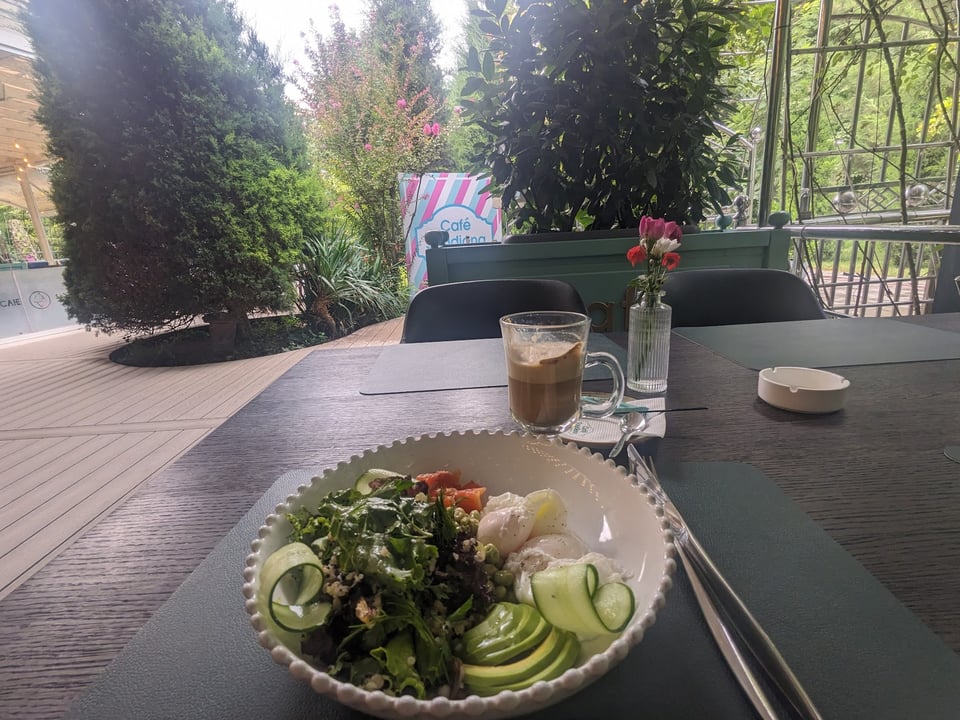
Next door, there is a small arena where something is happening, but I’m at a loss. Dozens of late high school or university aged girls are standing in groups in the arena, while announcements are made to them. One group at a time leaves until it’s empty. There are some cheers. Boys start running in, and assemble into similar groups. The groups move around. Some stirring music featuring the word “Uzbekistan” is played. In the background, workers are giving the stands a hasty makeover. Perhaps it’s something to do with the forthcoming Independence Day.
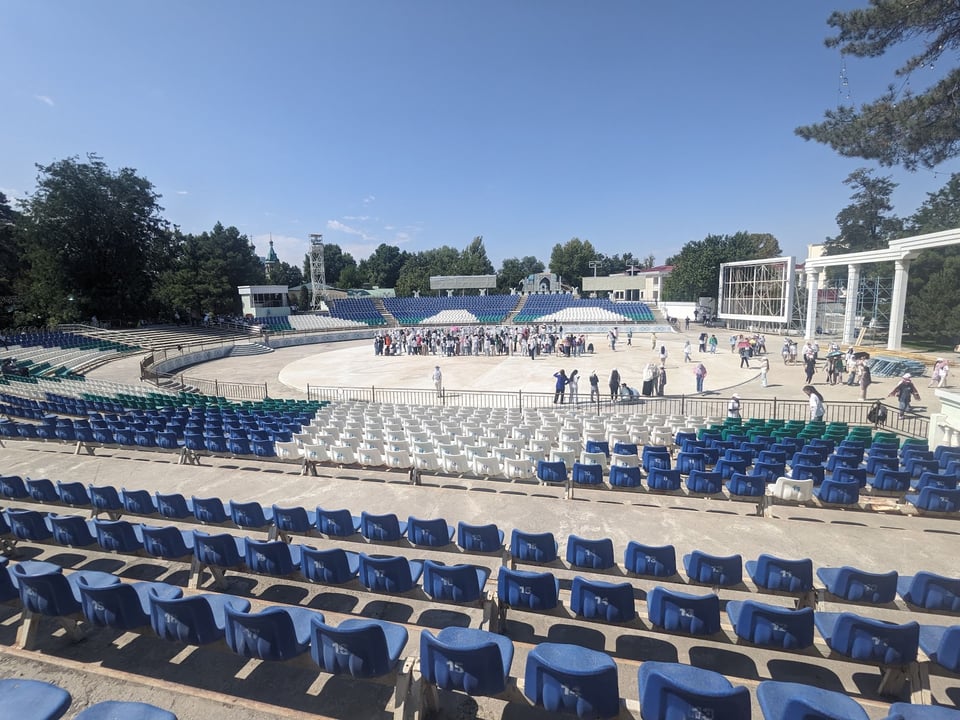
I flag down a taxi for the train station, and we have a wonderfully smooth ride, until I realise we never discussed a fare, and there’s no meter. Seizing the upper hand, I hand him about $2 and say “ok?” and we’re all good.
For I am Bukhara-bound. I’m not really sure what’s there, but millions of tourists can’t be wrong, and any excuse for some more train travel. Which, a couple of annoying Italian kids aside, is excellent.
Arriving at yet another majestic and well maintained station, I finagle my way into the taxi procured by a couple of kiwis, and listen to their gripes: so easy for people to get working holiday visas in Kiwiland, so difficult for them to get such visas abroad. Currently they’re targeting Spain. They’ve been on the road quite a while already and planning years in advance.
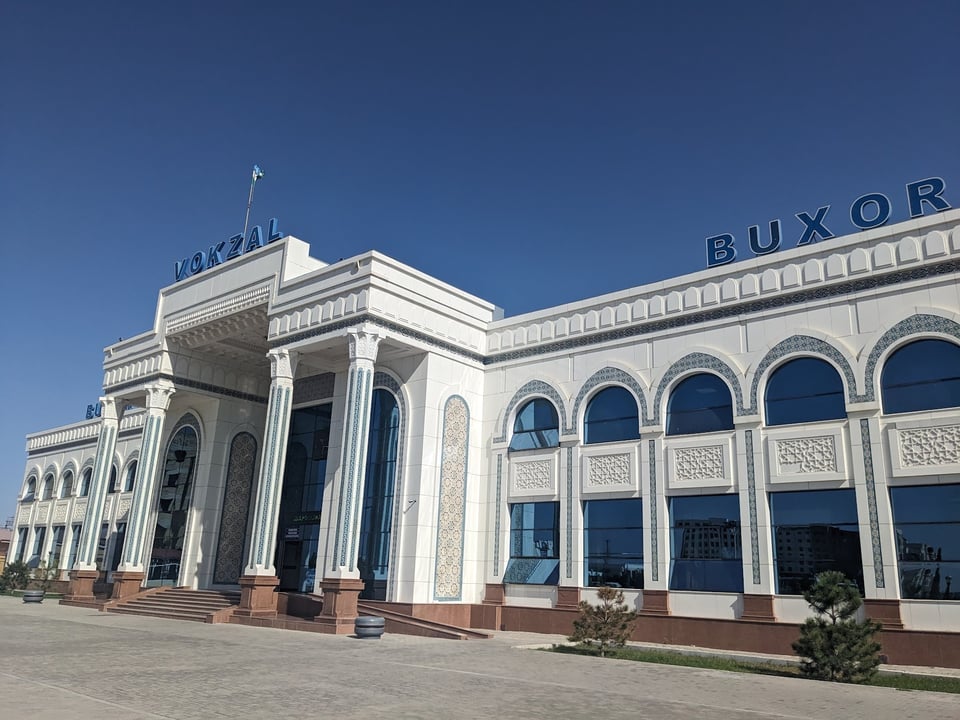
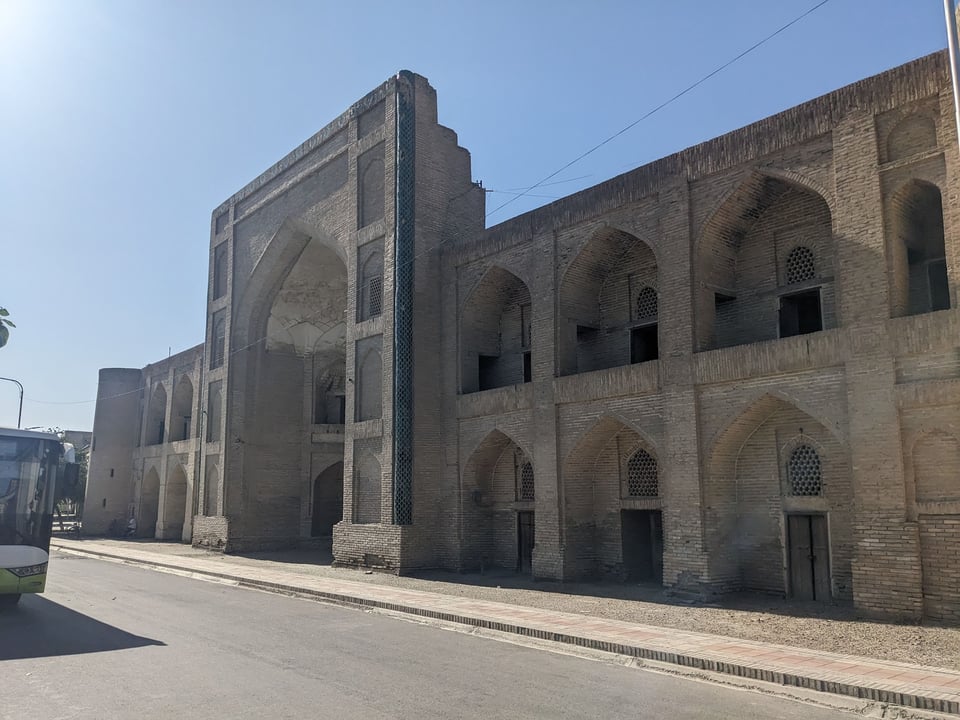
Bukhara turns out to be one of these gorgeous historical cities where the whole centre is a continuous marvel of monuments great and small. There are no cars, but e-scooters galore. Strolling in the evening with some new hostel buddies, we’re all impressed by the gorgeous lighting that brings the mosques, madrassas and mausoleums to life without overdoing it.

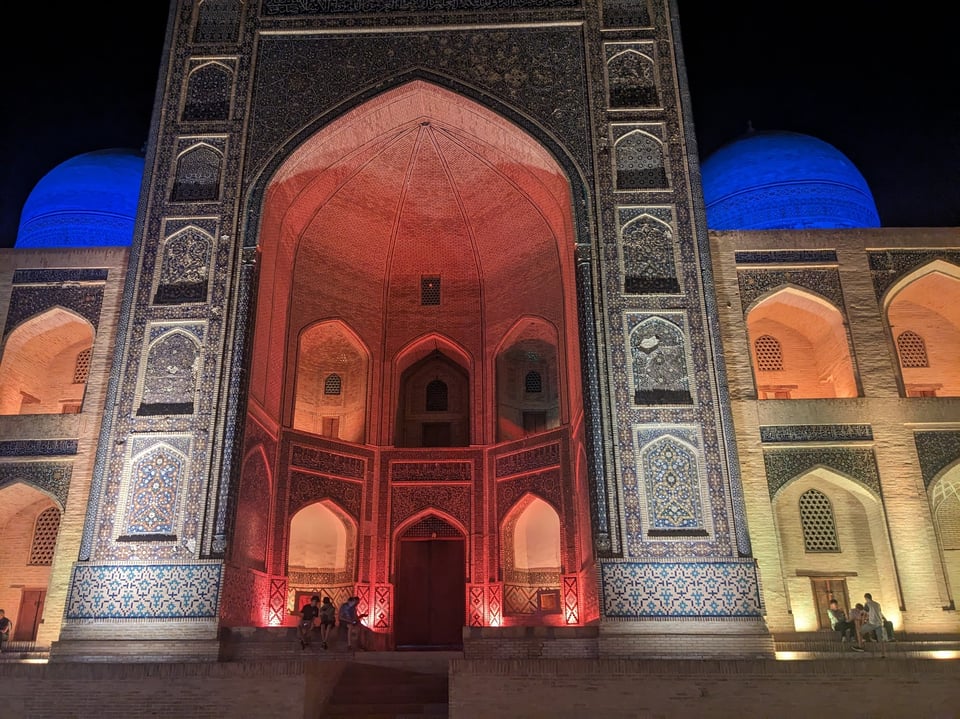
There are people selling handicrafts absolutely everywhere: women’s blouses and dresses, rugs, paintings, wooden chess sets and boxes, and even fur coats. It’s actually somehow all pretty charming in its touristy-ness, helped along by the odd busker - the first I have seen on this trip.
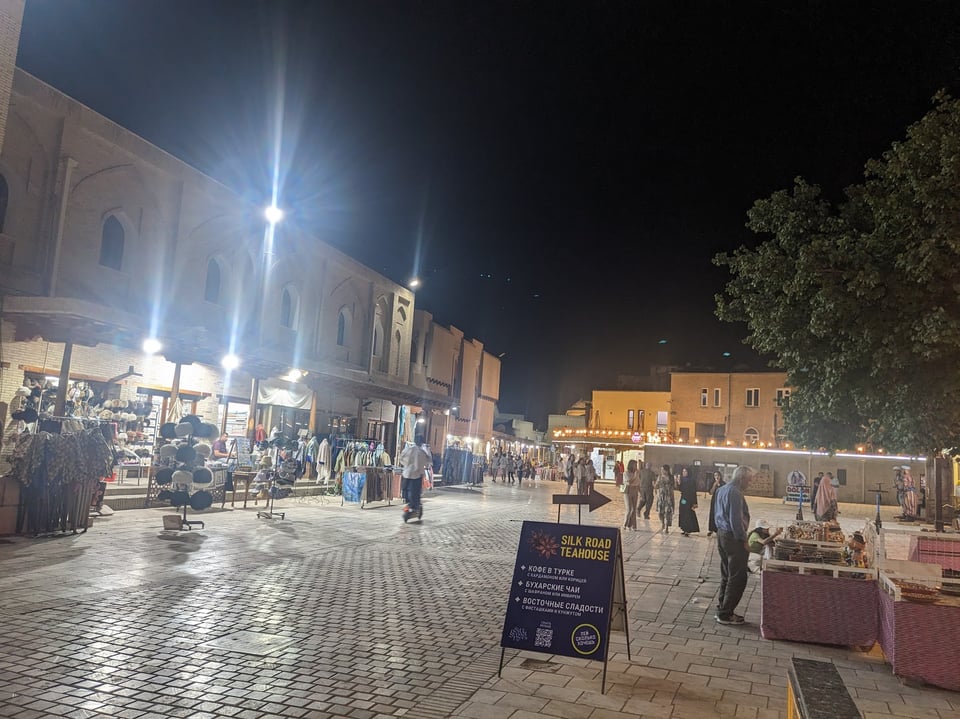
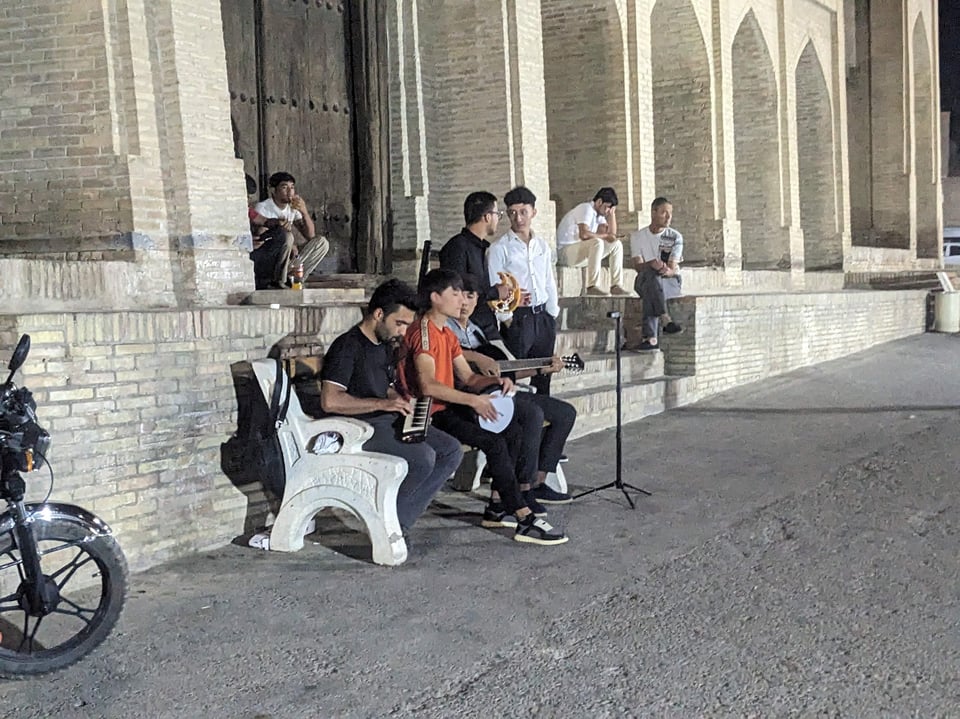
I make polite enquiries about rugs, and am told the rugs before me are all made with “camel wool”. Yes, the man assures me, then fetches his brother, whose stall it is, when my questions probe too deeply. This man informs me that the rugs, like all rugs, are made with sheep wool, which is white and easy to dye. He tells me that only gullible idiots would believe that rugs are made from camel wool, which is brown, can’t be dyed, and is very difficult to work with.
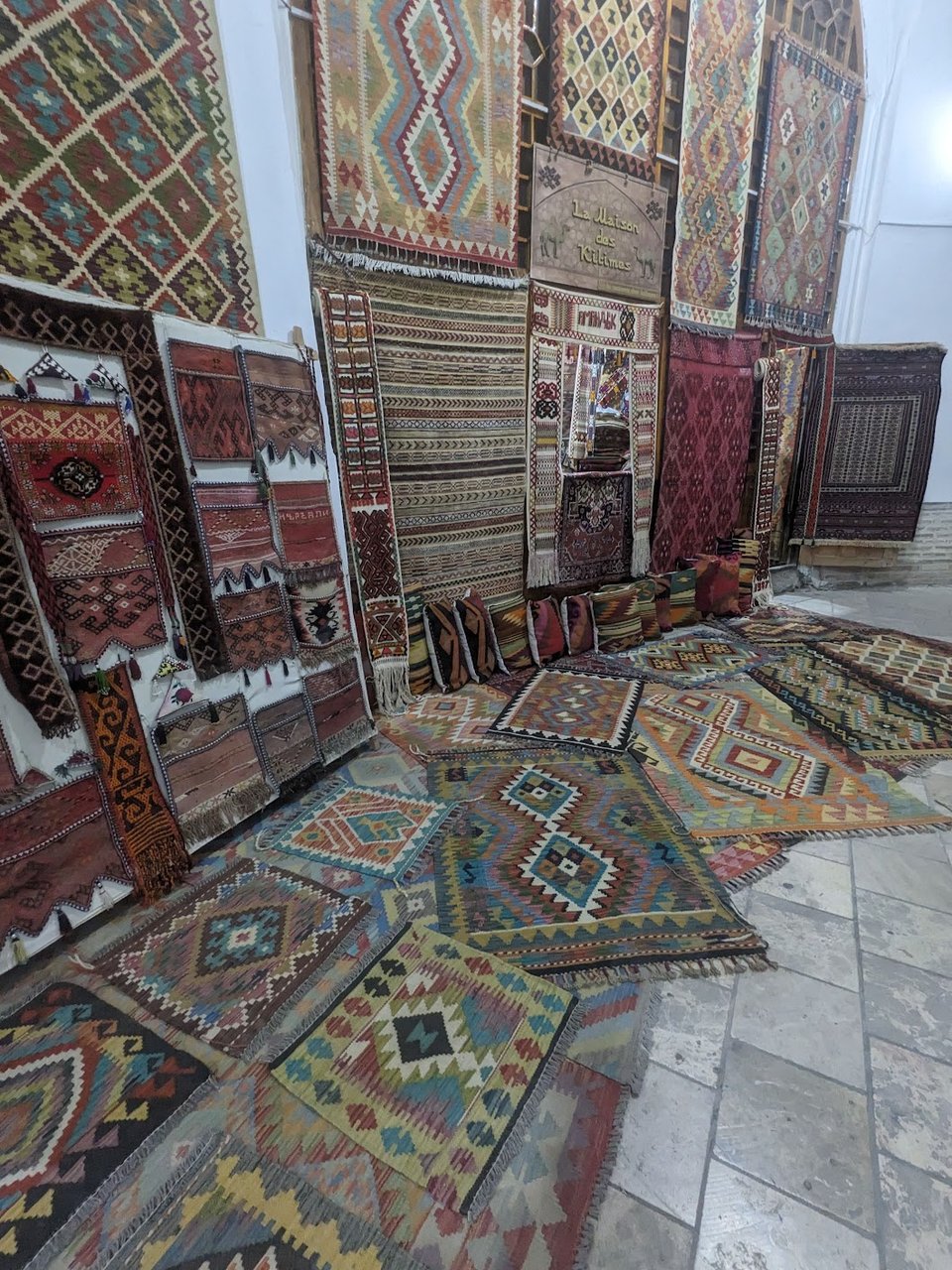
Abandoning my buddies hell-bent on beer, I find a quiet restaurant for a quiet tea. They really take herbal tea seriously here: instead of a cup of water and a teabag, you’ll get a large teapot filled with ingredients. This rose tea is good, but tastes surprisingly nothing like Turkish delight.
Then the musicians begin to play: one on a kind of tea chest drum, another intermittently playing a large stringed instrument, and the star of the show, a guy playing what might be a “doyra”, a hand-held drum roughly the dimensions of a large paella pan. He plays by rolling fingers across it, creating complex rhythms and a couple of different pitches, and basically he is incredibly good.
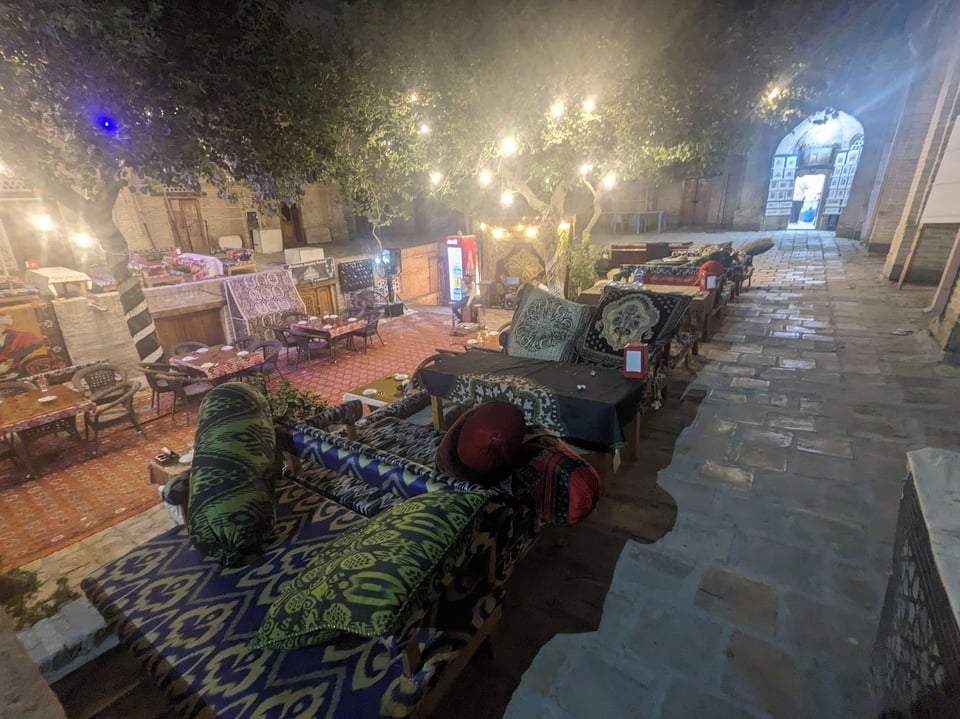
The music somehow draws in a couple of locals from the street, and a woman starts to dance. First, mucking about, but then she’s getting more serious. The musicians move to the front, and now there is this intense one-on-one between the doyra player and the dancer. It has all the energy and tension of a tango, and everyone is captivated. When it finally ends, the staff are still so excited I can barely find someone to take my money.
The sheer number of monuments to see is overwhelming though: my guesthouse-provided map lists 120. I’m thinking 3 might be a good number to aim for.